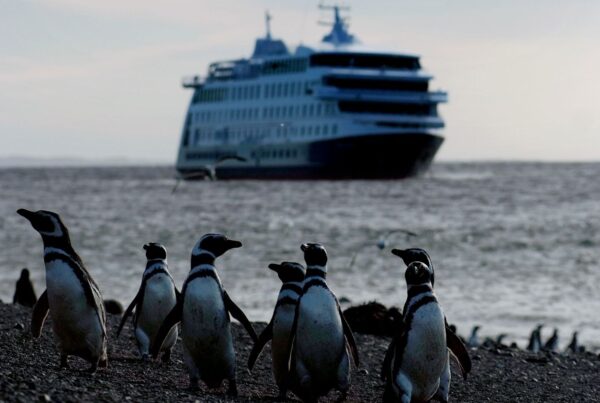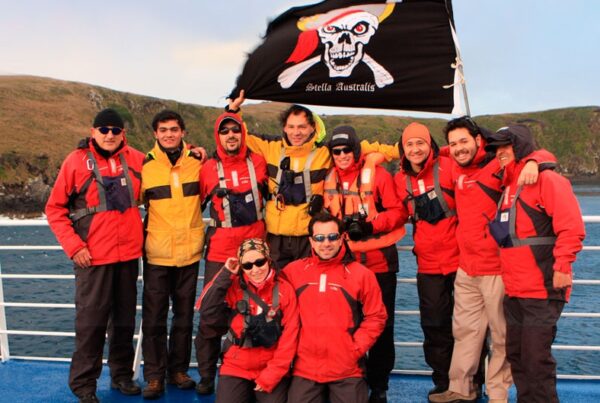 Bucking the global trend, some of Patagonia’s 50 plus glaciers are expanding rather than retreating — including at least one that can be easily visited before or after a cruise with Australis.
Bucking the global trend, some of Patagonia’s 50 plus glaciers are expanding rather than retreating — including at least one that can be easily visited before or after a cruise with Australis.
In keeping with global climate change, most of the region’s glaciers are getting smaller. Some faster than others — like Chile’s Bernardo Glacier. You can look at this two ways. Retreating glaciers produce more spectacular fjords and lake landscapes. On the other hand, the rapid loss of ice indicates that there is something disturbingly wrong with our planet.
Past glacial disturbances — whether expanding or retreating — have heralded major changes in human, animal and plant life on Mother Earth. And seeing as scientists say the world is already on the verge of a sixth great extinction event, the combination could devastate our remaining wild lands and wild populations.
One of the few bright spots in this otherwise gloomy forecast is the fact that a few Patagonian glaciers are getting bigger. Among the growing glaciers is easy-to-reach Perito Moreno in Argentina’s Los Glaciares National Park. And one of the hardest to reach — Brüggen/Pio XI Glacier in Chile’s secluded Bernardo O’Higgins National Park — which is also the longest glacier in the southern hemisphere.
An article by John Roach in National Geographic News explored some of the reasons why these glaciers might be expanding while so many others are in retreat.
Among the theories cited by Roach are the depth and temperature of the lake or sea water where the glacier ends; the steepness of the mountainsides or fjord walls that support the bottom and outer edges of a glacier; and how quickly or slowly a given glacier reacts to changes in the local micro-climate.
The jury is still out on why these glaciers are bucking the global trend. “At the end of the day, there is not a clear, convincing result for this research,” says Chilean glaciologist Andrés Rivera in the article. “I am not sure why these glaciers are advancing.”




